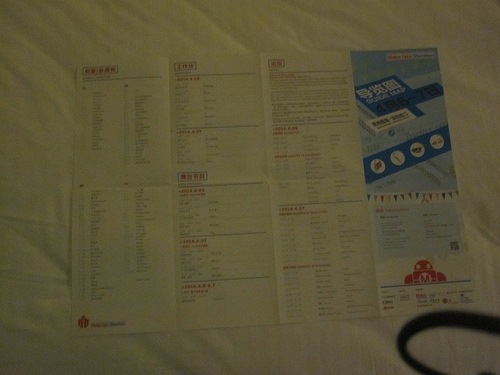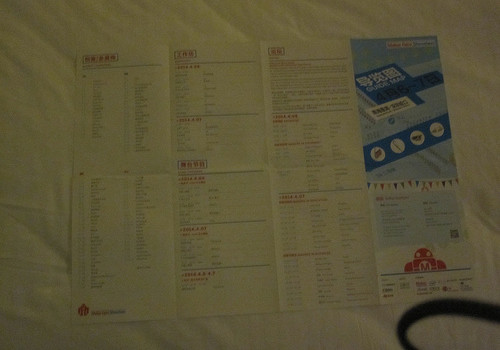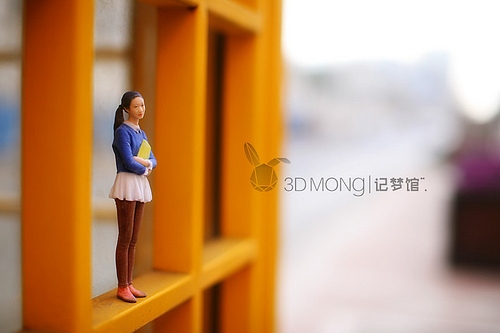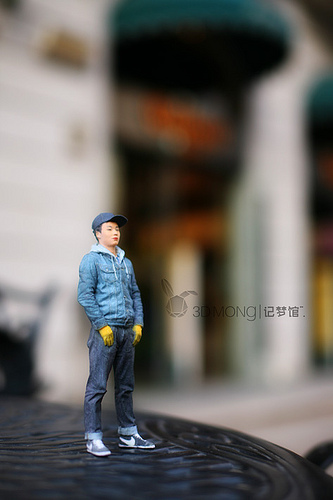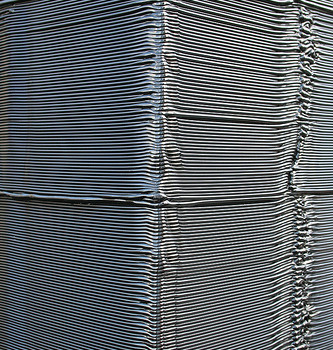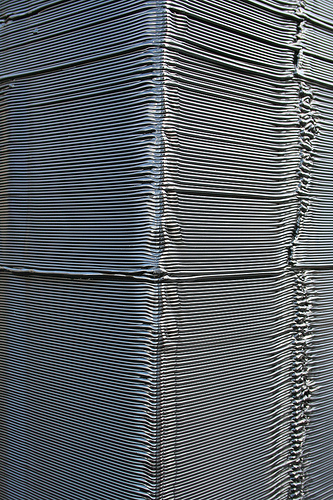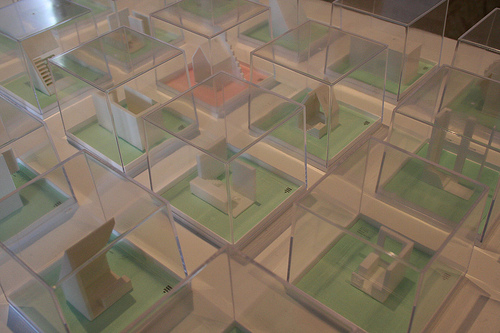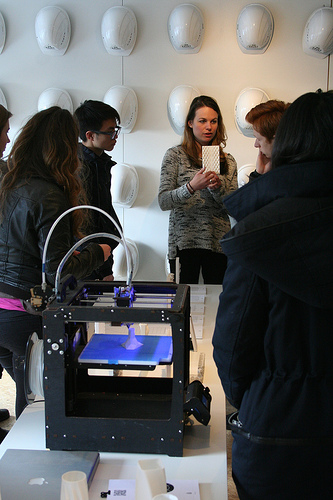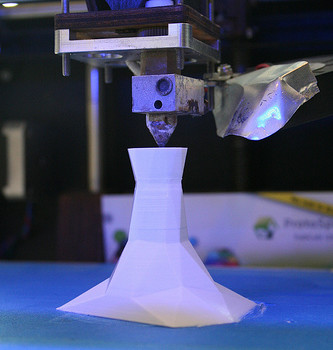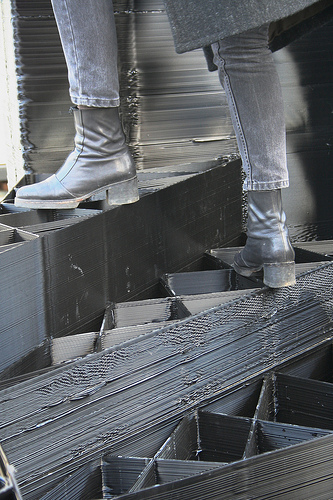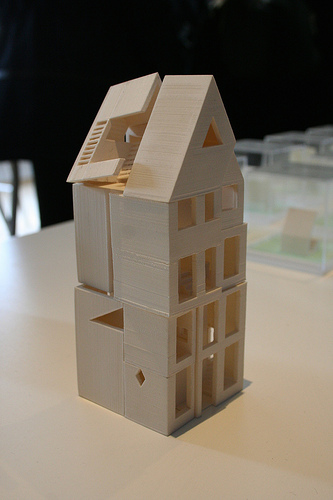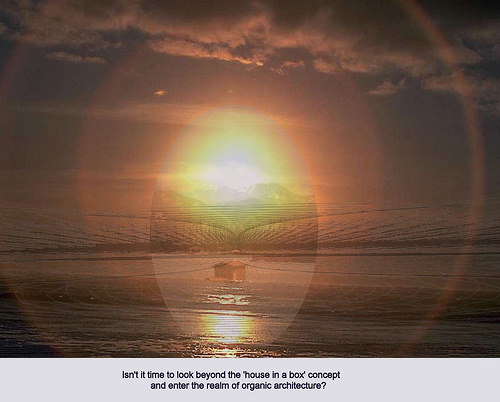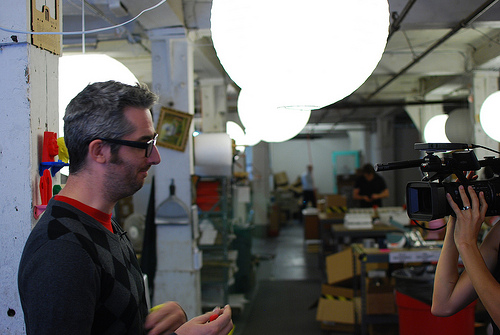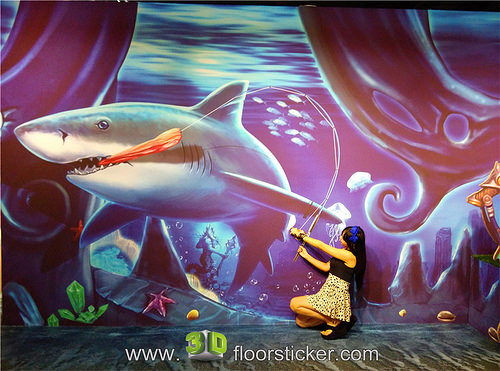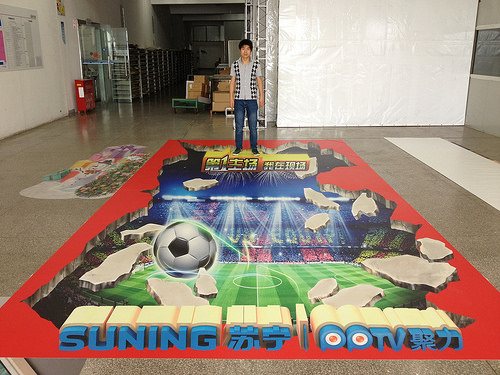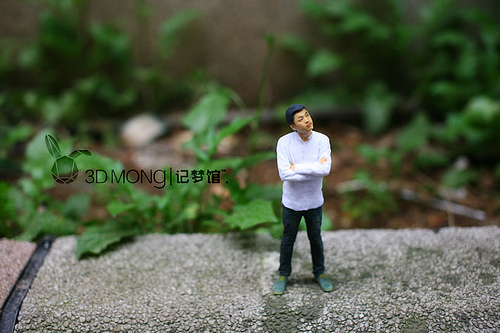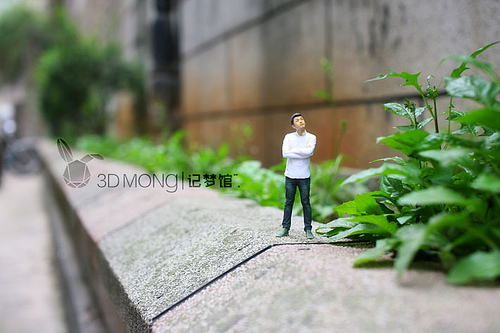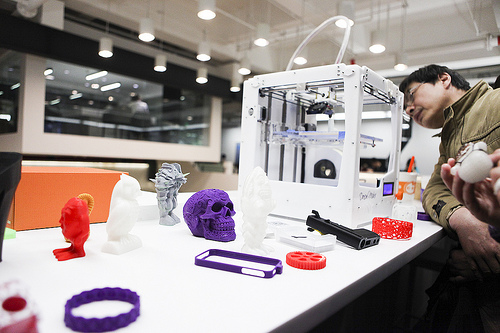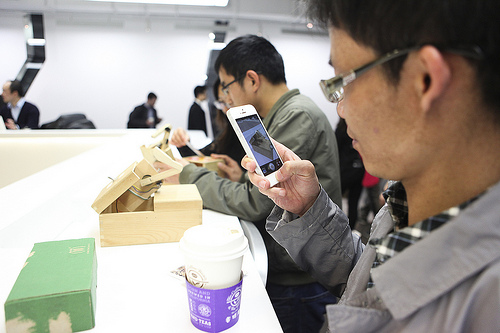Some cool 3d printing manufacturing companies photos:
Nimslo 3D Camera
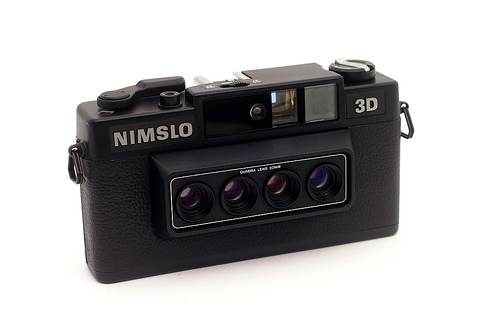
Image by Capt Kodak
Manufactured by the Nimslo Camera Co of Atlanta, Georgia. A 35mm viewfinder lenticular stereo camera introduced about 1980. The business ceased operations in 1994. Employing it’s “Quadra Lens” technique and electronically controlled shutter, it captured 4 equivalent, but off angle pictures on 35mm film. The film had to obtain “Nimslo processing” where the images have been combined in a special printing process on a lenticular imprinted paper (in fact, the “paper” was exposed from the back, developed and then coated). The camera has a metal core but more affordable plastic trim making it look a bit flimsy for the asking price tag new. Celebrity Barry Manalow was a large fan of the images and purchased as a lot of of the film mailers as he could when he discovered a shop that carried them…
See also: www.stereoscopy.com/cameras/nimslo.html
Churchill Club Best ten Tech Trends Debate
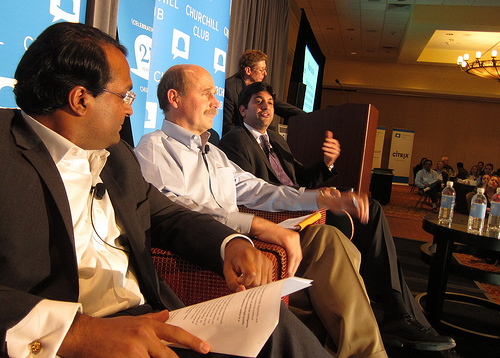
Image by jurvetson
I just got back from the Churchill Club’s 13th Annual Top ten Tech Trends Debate (website).
Curt Carlson, CEO of SRI, presented their trends from the podium, which are meant to be “provocative, plausible, debatable, and that it will be clear inside the next 1-three years whether or not they will really become trends.”
Then the panelists debated them. Speaking is Aneesh Chopra, CTO of the U.S., and smirking to his left is Paul Saffo, and then Ajay Senkut from Clarium, then me.
Right here are SRI’s 2011 Prime ten Tech Trends [and my votes]:
Trend 1. Age Before Beauty. Technologies is developed for—and disproportionately utilised by—the young. But the young are acquiring fewer. The large market place will be older individuals. The aging generation has grown up with, and is comfy with, most technology—but not with today’s most recent technologies goods. Technology item designers will discover the Baby Boomer’s technology comfort zone and will leverage it in the design and style of new devices. One particular example today is the Jitterbug cell phone with a massive keypad for effortless dialing and strong speakers for clear sound. The trend is for Child Boomers to dictate the technology products of the future.
[I voted YES, it’s an critical and underserved market place, but for tech merchandise, they are not the early adopters. The essential issue is age-inspired entrepreneurship. How can we get the entrepreneurial mind focused on this crucial market place?]
Trend two. The Medical professional Is In. Some of our political leaders say that we have "the very best healthcare care system in the globe". Feel what it must be like in the rest of the planet! There are many problems, but 1 is the high price of delivering expert suggestions. With the development of sensible virtual private assistants, powered by artificial intelligence and pervasive low-expense sensors, “the medical professional will be in”—online—for folks about the globe. As an alternative of the present Internet paradigm: “fill out this kind, and we’ll show you details about what may be ailing you”, this will be accurate diagnosis—supporting, and in some instances replacing—human health-related practitioners. We had been sending X-rays to India to be study now India is connecting to physicians right here for diagnosis in India. We see the idea in web sites that now offer you on the web videoconference interaction with a medical professional. The next step is automation. The trend is toward total automation: a combination of artificial intelligence, the World wide web, and very low-cost health-related instrumentation to supply high-quality diagnostics and advice—including answering patient questions—online to a worldwide audience.
[NO. Most physician check-ups and diagnoses will nonetheless need to have to be carried out in-particular person (blood tests, physical exams, and so on). Sensor technology can not completely replace human healthcare practitioners in the close to future. As soon as we have the physical interface (folks for now), then the networking and AI capabilities can engage, bringing specialist reactions to locally collected data. The true near-term trend in point-of-care is the adoption of iPads/phones connected to cloud services like ePocrates and Athenahealth and quickly EMRs.]
Trend three. Made for Me. Manufacturing is undergoing a revolution. It is becoming technically and economically possible to develop products that are distinctive to the specific demands of folks. For example, a cell phone that has only the hardware you want to assistance the features you want—making it lighter, thinner, a lot more effective, much less expensive, and simpler to use. This level of customization is becoming produced possible by converging technical advances: new 3D printing technology is properly documented, and networked micro-robotics is following. 3D printing now includes applications in jewelry, industrial design and style, and dentistry. Even though all of us could not be good solution designers, we have diverse demands, and we know what we want. The trend is toward sensible, one particular-off production of physical goods in broadly distributed micro-factories: the ultimate customization of merchandise. The trend is toward sensible, a single-off production of physical goods in broadly distributed micro-factories: the ultimate customization of items.
[NO. Personalization is taking place just fine at the software program level. The UI skins and app code is changeable at zero incremental price. Code permeates outward into the numerous vessels we develop for it. The iPhone. Soon, the auto (e.g. Tesla Sedan). Even the electrical circuits (when utilizing an FPGA). This will extend naturally to biological code, with DNA synthesis expenses plummeting (but that will probably remain centralized in BioFabs for the next 3 years. When it comes to constructing custom physical items, the expense and design challenges relegate it to prototyping, tinkering and hacks. As well a lot of people have a tough time in 3D content creation. The problem is the 2D interfaces of mouse and screen. Probably a multitouch interface to digital clay could assist, where the polygons snap to fit soon after the type is molded by hand.]
Trend four. Spend Me Now. Data about our individual behavior and traits is exploited frequently for industrial purposes, usually returning tiny or no worth to us, and occasionally without having our information. This information is becoming a essential asset and a significant competitive advantage for the organizations that collect it. Consider of your supermarket club card. These knowledge-gatherers will need to get smarter and more aggressive in convincing us to share our information with them and not with their competitors. If Television advertisers could know who the viewers are, the worth of the commercials would go up enormously. The trend is technologies and enterprise models primarily based on attracting buyers to share massive amounts of details exclusively with service providers.
[YES, but it is practically nothing new. Amazon tends to make a lot more on merchandising than product sales margin. And, certain companies are receiving much better and much better at acquiring client info and personalizing offerings especially to these consumers. RichRelevance provides this for ecommerce (driving 25% of all e-commerce on Black Friday). Across all these vendors, the typical lift from personalizing the shopping expertise: 15% enhance in all round sales and 8% enhance in long-term profitability. But, just becoming explicit and transparent to the consumer about the source of the information can boost the effectiveness of targeted applications by up to one hundred% (e.g., saying “Because you purchased this product and other customers who bought it also bought this other solution" yielded a 100% boost in solution recommendation effectiveness in numerous A/B tests). Social graph is incredibly worthwhile as a marketing tool.]
Trend five. Rosie, At Last. We’ve been waiting a lengthy time for robots to live in and run our properties, like Rosie in the Jetsons’ household. It is taking place a little now: robots are lastly starting to leave the manufacturing floor and enter people’s houses, offices, and highways. Robots can climb walls, fly, and run. We all know the Roomba for cleaning floors—and now there’s the Verro for your pool. True-time vision and other sensors, and affordable precise manipulation, are enabling robots to assist in our care, drive our automobiles, and shield our houses and property. We need to broaden our view of robots and the types they will take—think of a self-loading robot-compliant dishwasher or a self-guarding home. The trend is robots becoming embedded in our environments, and taking benefit of the cloud, to recognize and fulfill our wants.
[NO. Not in 3 years. Wanting it badly does not make it so. But I just love that Google RoboCar. Robots are not leaving the factory floor – that’s exactly where the opportunity for newer robots and even humanoid robots will start. There is lots of factory function nevertheless to be automated. Rodney Brooks of MIT thinks they can be less expensive than the cheapest outsourced labor. So the robots are coming, to the factory and the roads to begin, and then the home.]
Trend six. Social, Truly. The rise of social networks is well documented, but they’re not truly social networks. They’re a mix of close friends, strangers, organizations, hucksters—it’s much more like walking by means of a rowdy crowd in Instances Square at evening with a group of close friends. There is a growing require for social networks that reflect the fundamental nature of human relationships: known identities, mutual trust, controlled levels of intimacy, and boundaries of shared data. The trend is the rise of true social networks, developed to preserve true, respectful relationships online.
[YES. The ambient intimacy of Facebook is leading to some startling statistics on fB proof reuse by divorce lawyers (80%) and employment rejections (70%). There are differing approaches to resolve this issue: Altly’s option networks with partioning and handle, Jildy’s greater filtering and auto-segmentation, and Path’s 50 friend limit.]
Trend 7. In-Your-Face Augmented Reality. With ever-cheaper computation and advances in laptop vision technology, augmented reality is becoming sensible, even in mobile devices. We will move beyond pricey telepresence environments and virtual reality games to totally immersive environments—in the workplace, on the factory floor, in medical care facilities, and in new entertainment venues. I as soon as did an experiment where a individual came into a space and sat down at a desk against a large, 3D, high-definition Tv display. The projected image showed a space with a equivalent desk up against the screen. The individual would place on 3D glasses, and then a projected individual would enter and sit down at the other table. Following talking for five to 10 minutes, the projected individual would stand up and put their hand out. Most of the time, the very first person would also stand up and put their hand into the screen—they had speedily adapted and forgotten that the other person was not in the space. Augmented reality will grow to be indistinguishable from reality. The trend is an enchanted world— The trend is hyper-resolution augmented reality and hyper-precise artificial men and women and objects that fundamentally boost people’s encounter of the planet.
[NO, lenticular screens are too high-priced and 3D glasses are a discomfort in the cortex. Augmented reality with iPhones is fantastic, and pragmatic, but not a leading 10 trend IMHO]
Trend eight. Engineering by Biologists.
Biologists and engineers are different kinds of people—unless they are operating on synthetic biology. We know about genetically engineered foods and creatures, such as gold fish in multiple other colors. Subsequent we’ll have biologically engineered circuits and devices. Evolution has developed adaptive processing and system resiliency that is a lot more sophisticated than anything we’ve been capable to style. We are studying how to tap into that natural experience, designing devices utilizing the mechanisms of biology. We have currently noticed basic biological circuits in the laboratory. The trend is practical, engineered artifacts, devices, and computer systems primarily based on biology rather than just on silicon.
[YES, and NO simply because it was so badly mangled as a trend. For the subsequent handful of years, these approaches will be utilised for fuels and chemicals and components processing simply because they lend themselves to a 3D fluid medium. Then 2D self-assembling monolayers. And eventually chips , beginning with memory and sensor arrays lengthy ahead of heterogeneous logic. And processes of biology will be an inspiration throughout (evolution, self-assembly, and so forth.). Possessing produced predictions along these themes for about a decade now, the wording of this 1 frustrated me]
Trend 9. ‘Tis a Present to be Easy. Cyber attacks are ever far more frequent and powerful. Most attacks exploit holes that are inevitable offered the complexity of the application items we use every single day. Cyber researchers really realize this. To steer clear of these vulnerabilities, some cyber researchers are beginning to use only simple infrastructure and applications that are throwbacks to the computing globe of two decades ago. As simplicity is shown to be an successful strategy for avoiding attack, it will turn out to be the guiding principle of computer software style. The trend is cyber defense through widespread adoption of basic, low-feature software for buyers and companies.
[No. I understand the benefits of becoming open, and of heterogencity of code (to stay away from monoculture collapse), but we have long ago left the domain of basic. Yes, Web transport protocols won via simplicity. The presentation layer, not so considerably. If you want dumb pipes, you want wise edges, and sensible edges can be hacked. Graham Spencer gave a wonderful talk at SFI: the trend towards transport simplicity (e.g. dumb pipes) and "intelligence in the edges" led to mixing code and information, which in turn led to all kinds of XSS-like attacks. Drive-by downloading (enabled by XSS) is the most popular automobile for delivering malware these days.]
Trend ten. Reverse Innovation. Mobile communication is proliferating at an astonishing price in creating countries as price-points drop and wireless infrastructure improves. As establishing countries leapfrog the need to have for physical infrastructure and brokers, making use of mobile apps to conduct micro-scale organization and to enhance top quality of life, they are innovating new applications. The developing globe is swiftly becoming the biggest market place we’ve ever seen—for mobile computing and considerably much more. The trend is for creating countries to turn around the flow of innovation: Silicon Valley will begin to learn a lot more from them about innovative applications than they want to find out from us about the underlying technology.
[YES, globalization is a megatrend nonetheless in the generating. The mobile markets are clearly China, India and Korea, with app layer innovation increasingly originating there. Not entirely of course, but we have a lot to understand from the early-adopter economies.]
White Residence Maker Faire (201406180007HQ)
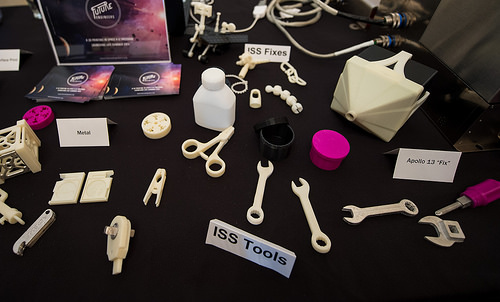
Image by NASA HQ PHOTO
The Produced In Space company displays some of the tools that can be created by their 3D printer for the duration of the very first ever White House Maker Faire which brings together students, entrepreneurs, and each day citizens who are employing new tools and tactics to launch new businesses, discover crucial abilities in science, technologies, engineering, and math (STEM), and fuel the renaissance in American manufacturing, at the White Home, Wednesday, June 18, 2014 in Washington. The Produced In Space 3D printer was just authorized by NASA to be tested onboard the International Space Station (ISS), and NASA announced a challenge for students to style items that would be printed by this 1st 3D printer to fly in space. Photo Credit: (NASA/Bill Ingalls)
